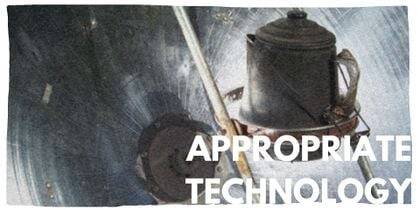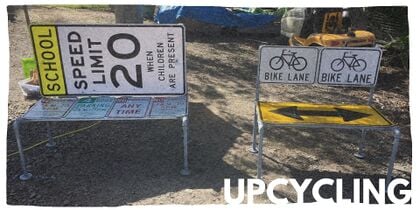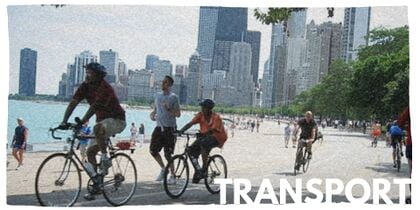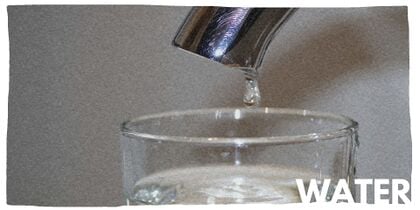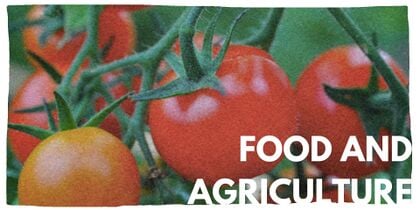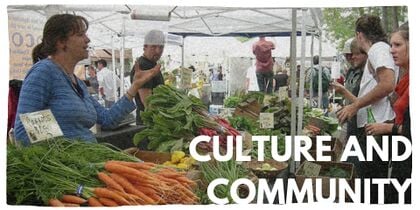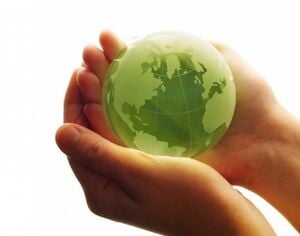
Green living (or sustainable living) is a lifestyle that attempts to reduce an individual's or society's use of the Earth's natural resources and his or her own resources.[1]
In practice, it deals about practical lifestyle choices, large and small, to live inline with the Earth's carrying capacities,W while maintaining (and sometimes improving) our quality of life. Besides lifestyle choices, the housing and appliances we use also has its impact on the environment (see Autonomous houses and neighbourhoods). This article only focuses on choices in lifestyle/habits. Sustainable city living then again discusses some of the areas of action specific to green living in an urban environment.
In order to make sustainable choices, it is very helpful to have solid, reliable information that tells us which behaviors are sustainable and which are unsustainable, and -more importantly-, which actions will make the greatest positive difference for us, and should be prioritized. Green living can be high tech (buying a hybrid vehicle), low tech (green cleaning), or completely "back to nature". It can be smart grid or off the grid.
Sustainable living in the 21st century can be described as "shifting to a renewable energy-based, reuse/recycle economy with a diversified transport system."
Practitioners of sustainable living often attempt to reduce their carbon footprint by altering methods of transportation, energy consumptionW and diet.[3] Proponents of sustainable living aim to conduct their lives in ways that are consistent with sustainability, in natural balance and respectful of humanity's symbioticW relationship with the Earth's natural ecologyW and cycles.[4] The practice and general philosophy of ecological living is highly interrelated with the overall principles of sustainable development.
It can be very economical and also time-saving to live more green. For example most people will hesitate to purchase expensive low-energy-light-bulbs, like light emitting diodes (LED). All because they are more expensive to buy. But prove to them that these bulbs have a much longer lifetime and result in a lower electric bill, providing a small profit over a long time. Larger investments like insulating the walls of your house, or putting in 3-glaze-windows is also very expensive but can pay off. Doing the financial calculations on the different options can help you find the most economical and effective choices.[5]
Food[edit | edit source]

Not all foods are created equal! The carbon footprint of different foods on a per-food-calorie basis varies wildly..[6] Plants produce more calories on the same amount of land and emit less carbon dioxide and methane than animals. Foods with the lowest associated carbon footprints include:
- Grains, pulses, fruits and vegetables.
- Anything you grow yourself without fossil fuel inputs.
- Chicken — Not particularly low footprint but the lowest among meats.
Foods with the highest carbon footprints include:
- Red meat — Meat production requires a lot of land for growing animal feed, which is the main driver of deforestation globally.
- Dairy — Cattle also emits considerable amounts of methane.[7]
- Processed foods — Requiring refrigeration and anything air-freighted or grown in most greenhouses (except Iceland where they are heated geothermally).
Planning meals ahead of time can help avoid the temptation to purchase prepared foods and take advantage of fresh, local food that is in season.
House[edit | edit source]

Green building is the practice of increasing the efficiency with which buildings use resources — energy, water, and materials — while reducing building impacts on human health and the environment, through better siting, design, construction, operation, maintenance, and removal — the complete building life cycle.
A green building minimizes impact on the environment through resource conservation in the choice of materials, construction methods, and ongoing consumption. Avoiding artificial compounds and managing ventilation can also contribute to the health of its occupants.
Perhaps the least obvious benefit, yet an extremely important one, is comfort. By reducing the need for air conditioning and heating, and by using natural light, natural materials and natural ventilation, green buildings tend to be aesthetically pleasing, texturally rich, fresh and pleasing environments,
Implementing a building management system, a of computer networking of all energy-related mechanisms of the building, can greatly decrease the need for all forms of energy[verification needed] and improve comfort. This is the concept of the "intelligent building".
Services[edit | edit source]
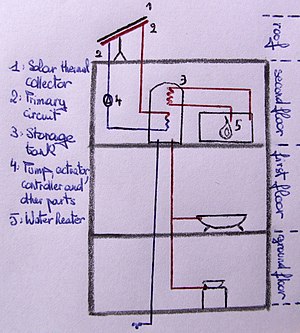
An autonomous house or off-the-grid (OTG) house is designed to be operated independently from infrastructural support services ("grids") such as the mains electricity grid, water supply system, sewage/excreta disposal system, centralised food production system, gas grid, and in some cases, storm drains, mains electricity grid-connected communication services and public roads.
An autonomous neighbourhood is a collection of houses which together work autonomously (as one unit). Some of the houses may be completely autonomous on one aspect (e.g. electricity production) but not on other aspects (e.g. sewage disposal)
The phrase "off the grid" has also entered popular language as a related but distinct concept of generally independent lifestyles or desire to be low-profile. For example: "I'm not on social media because I prefer to stay off the grid."
This article focuses on the housing and appliances of autonomous houses. Sustainable city living discusses some of the areas of action specific to green living in a urban environment.
An example of a sustainable city is a 6.5-MW microgrid was built by AlphaStruxure. For it’s a joint venture of Schneider Electric and the Carlyle Group. That’s a global private equity firm, under a long-term energy-as-a-service (EaaS) agreement the company has with the county. Located at the Brookville Smart Energy Bus Depot, it will power the Montgomery County Department of Transportation’s Ride On transit electric buses.
Products[edit | edit source]

 ‘My escape is going north’: heatwaves begin to drive tourists in Europe to cool climes, theguardian.com (Jul 02, 2024)
‘My escape is going north’: heatwaves begin to drive tourists in Europe to cool climes, theguardian.com (Jul 02, 2024)  How the small Pacific island nation of Vanuatu drastically cut plastic pollution, theguardian.com (Jun 20, 2024)
How the small Pacific island nation of Vanuatu drastically cut plastic pollution, theguardian.com (Jun 20, 2024)  Plastic-choked rivers in Ecuador are being cleared with conveyor belts, BBC Future (Apr 22, 2024)
Plastic-choked rivers in Ecuador are being cleared with conveyor belts, BBC Future (Apr 22, 2024)
Ethical consumerism refers to buying things that are made ethically i.e. without harm to or exploitation of humans, animals or the natural environment. This generally entails favoring products and businesses that take account of the greater good in their operations.[8] An extension of the idea, doing more with less, overlaps with the first part of Reduce, reuse, repair and recycle.
Transport[edit | edit source]
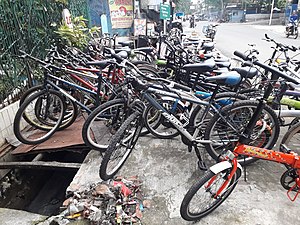
Within urban areas, sustainable transport is a key aspect of creating more sustainable cities.
With the depleting fossil oil reserves, climate warming exacerbated by carbon emissions and high energy prices, the conventional automobile industry is becoming less and less feasible to the conversation of sustainability. Revisions of urban transport systems that foster mobility, low-cost transportation and healthier urban environments are needed. Such urban transport systems should consist of a combination of rail transport, bus transport, bicycle pathways and pedestrian walkways. Public transport systems such as underground rail systems and bus transit systems shift huge numbers of people away from reliance on car mobilization and dramatically reduce the rate of carbon emissions caused by automobile transport.[9] Carpooling is another alternative for reducing oil consumption and carbon emissions by transit.
In general, following vehicles types can be distinguished:
- Water vehicle (includes supersurface water vehicles (regular or hydrofoiling), subsurface vehicles (regular or supercavitating))
- Ground vehicle (includes supersurface ground vehicles, subsurface ground vehicles)
- Air vehicle (includes lighter-than-air air vehicles and heavier-than-air air vehicles)
Most vehicles above can be either:
- Privately owned; see personal water vehicle, personal ground vehicle, personal air vehicle
- Public: see public transport. Public transport vehicles includes cabs, trains, bicycles (Bicycle sharing systems), buses, trucks, helicopters, and aircraft (renting services).
Ecotourism[edit | edit source]

Ecotourism is tourism in a sustainable way. It doesn't necessarily involve traveling from one place to another; on the contrary, it usually involves not traveling at all. When it does involve traveling, it is with sustainable means of transport, preserving the environment of the place to visit and improving the well-being of the local people W. In this page you will find tips and suggestions on how to practice ecotourism in order to live in a greener way
Water[edit | edit source]
One can use water more sustainably through a series of simple, everyday measures. These measures involve considering indoor home appliance efficiency, outdoor water use, and daily water use awareness.
Waste[edit | edit source]

As populations and resource demands climb, waste production contributes to emissions of carbon dioxide, leaching of hazardous materials into the soil and waterways, and methane emissions. In the United States alone, over the course of a decade, 500 trillion pounds of resources will have been transformed into nonproductive wastes and gases.[10] Thus, a crucial component of sustainable living is being waste conscious. One can do this by reducing waste, reusing commodities, and recycling.
There are a number of ways to reduce waste in sustainable living. One method is reducing paper waste, such as by taking action to cancel junk mail and move paper transactions to an online document. Another method to reduce waste is to buy in bulk, which reduces packaging materials. Preventing food waste is an alternative to organic waste compiling to create costly methane emissions. Food waste can be reintegrated into the environment through composting. Composting can be carried out at home or locally, with community composting. An additional example of how to reduce waste is being cognizant of not buying materials with limited use in excess, such as paint. Reduction aides in reducing the toxicity of waste if non-hazardous or less hazardous items are selected.[11]
By reusing materials, one lives sustainably by not contributing to the addition of waste to landfills. Reuse saves natural resources by decreasing the necessity of raw material extraction. Recycling, a process that breaks down used items into raw materials in order to make new materials, is a particularly useful means of contributing to the renewal of goods. Recycling incorporates three primary processes; collection and processing, manufacturing, and purchasing recycled products.[12] An offshoot of recycling, upcycling, strives to convert a material into something of similar or greater value in its second life.[13] By integrating measures of reusing, reducing, and recycling one can effectively reduce production of waste and use materials in a sustainable manner.
Washing[edit | edit source]

Washing and drying clothing are common activities that can use a lot of labor, energy and water and produce large amounts of wastewater - if we aren't careful. However, there are several best practices, like washing in cold water and line drying, which are not only better for the environment, but will make your clothes last longer. This reduces the burden of mending and replacing clothes, and saves resources for other uses. Hygiene is also a crucial aspect of clothing, and improper cleaning can lead to infection and diseases.
Washing can be laborious when there are no washing machines, but there are tools and devices that can be utilized to make washing easier and faster.
Computing[edit | edit source]
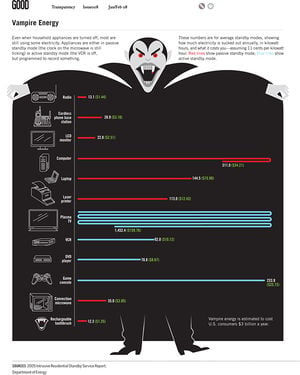
Green computing, or green information technology (IT), refers to environmentally sustainable computing. It is the study and practice of using computing resources efficiently by designing, manufacturing, using, and disposing of computers, servers, and associated subsystems (such as monitors, printers, storage devices, and networking and communication systems) with minimal or no impact on the environment. Green computing strives for economic practicality and improved system performance while satisfying social and ethical responsibilities. Green computing includes the dimensions of environmental sustainability, energy efficiency economics, and total cost of ownership (which includes the cost of disposals and recycling)."[14]
Green computing can be made more sustainable in several ways including:
- Placing the computer in hibernation mode
- Switching the computer screen off instead of using screensavers
- Turning the computer off when it is not in use
Each of these examples can save power. More efficient coding means computers use less power and need less powerful hardware.
Family[edit | edit source]
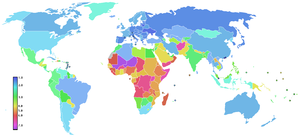
There is a popular myth that population growth alone determines our impact on the environment.[15] In reality though, it is the combination of both the population size, as the (degree of) participation of each member on the economy, as the way in which each member chooses to use this wealth that determines this.[16]
That being said, the decision of not reproducing is one of the most effective actions we can take. In practice, some families will be able to propagate and some not as we are all entitled to about 0,57 children.[17][18] This does not mean of course that we can not have any children at all, because adoption is still an option, as this does not increase the population size.
Gifts[edit | edit source]

While Christmas is often the best time of year for catching up with family and friends, it's also the biggest time of spending - on presents, food, alcohol, parties and holidays. Unfortunately, all of our spending and consumption results in significant environmental damage and carbon pollution.
However, you don't have to be a scrooge to reduce your carbon footprint at Christmas or any other important date such as birthdays or anniversaries. Here are a few tips to achieve this.
[edit | edit source]
You should be a good role model to your relatives, friends, and coworkers by showing good examples on how they easily can change. But do not try to persuade or force anyone to change, it will sometimes cause a backlash, and they will not respect you and your ideas. Being hardcore and extreme about living green will sometimes make them into skeptic opponents and it will be impossible to discuss the core principles of green living. Also debates like this take the focus from the important tasks to talk about.
If your way of living shows how little effort it takes to change methods and ways of life, that it is not necessary to "go back and live in a cave without any amenities," this can lower resistance. Inspire others with your examples. If you share ideas, try to talk about one new small thing that is easy for anyone to change per week (or per month), and one major thing to change per month (or per 6 months) - slow change is usually longer-lasting.
History[edit | edit source]
The earliest milestones for the modern sustainable living movement include the books Living the Good Life (1954) by Helen and Scott NearingW and Silent SpringW (1962) by Rachel Carson. Influential books in later years include The Limits to GrowthW (1972) by Donella Meadows and the classic which popularized the idea of appropriate technology, Small is BeautifulW (1973) by E. F. Schumacher.W
Over time many of these ideas have moved from the fringe to the mainstream - at least as topics of acknowledged importance, even when action lags well behind rhetoric. Sustainability is now an important selling point in advertising (often simply greenwashing), campaigns for policy changes are going on in cities around the world, and policies to encourage sustainable lifestyles on a societal level provoke fierce debates in election campaigns.
From 1972, the United Nations has held occasional conferences focused on improving sustainability within societies. So far, these have been held in 1972W, 1992 and 2002W.[19] In 2007 the United Nations published Sustainable Consumption and Production, Promoting Climate-Friendly Household Consumption Patterns.[20]
See also[edit | edit source]
|
|
|
References[edit | edit source]
- ↑ Ainoa, J., Kaskela, A., Lahti, L., Saarikoski, N., Sivunen, A., Storgårds, J., & Zhang, H. (2009). Future of Living. In Neuvo, Y., & Ylönen, S. (eds.), Bit Bang - Rays to the Future. Helsinki University of Technology (TKK), MIDE, Helsinki University Print, Helsinki, Finland, 174-204. ISBN 978-952-248-078-1.
- ↑ Ross, Greg. "An interview with Lester Brown" American Scientist.
- ↑ Winter, Mick (2007). Sustainable Living: For Home, Neighborhood and Community. Westsong Publishing. ISBN 0-9659-0005-3.
- ↑ The Center for Ecological Living and Learning (CELL)–philosophy
- ↑ Technology jumps
- ↑ "The Impacts - 2011 Meat Eater's Guide to Climate Change + Health". Environmental Working Group. 2011. "Lamb, beef and cheese have the highest emissions. This is true, in part, because they come from ruminant animals that constantly generate methane through their digestive process, called enteric fermentation. Methane (CH4) – a greenhouse gas 25 times more (CH4) potent than carbon dioxide (CO2), accounts for nearly half the emissions generated in this study's Nebraska beef production model (...). Pound for pound, ruminants also require significantly more energy-intensive feed and generate more manure than pork or chicken (...)."
- ↑ https://pubmed.ncbi.nlm.nih.gov/8567486/
- ↑ Glossary of sustainability terms
- ↑ Brown, Lester R. Plan B 4.0: Mobilizing to Save Civilization. New York: W.W. Norton, 2009.
- ↑ Hawken, Paul, Amory Lovins, and L. Hunter Lovins. Natural Capitalism: Creating the Next Industrial Revolution. New York City: Little, Brown and Company, 1999. Print.
- ↑ Reduce United States Environmental Protection Agency. 5 May 2010. Web 10 Nov. 2010
- ↑ Wastes – Resource Conservation – Reduce, Reuse, Recycle United States Environmental Protection Agency. 05 May 2010. Web 10 Nov. 2010
- ↑ UpCycle Sustainability Management. Presidio Graduate School. Web. 10 Nov. 2010
- ↑ San Murugesan, "Harnessing Green IT: Principles and Practices," IEEE IT Professional, January-February 2008, pp 24-33.
- ↑ http://www.urbansprout.co.za/population_growth_has_no_relation_to_global_warming
- ↑ For example, someone with millions on his bank account can decide to park it there until he dies, while someone with a limited budget can still have a major negative impact on the environment (e.g. by starting a forest fire) and/or can also have other negative impacts (e.g. by disposing all his organically non-decomposable waste in the environment).
- ↑ Having 2 children maintains population size, divided by 3,5 makes 0,57
- ↑ The decision on who can and can not reproduce will probably depend on financial means (to be able to support children), and genetic makeup
- ↑ National Sustainable Development Strategies United Nations Department of Economic and Social Affairs April 2008.
- ↑ Sustainable Consumption and Production: Promoting Climate-Friendly Household Consumption Patterns United Nations Department of Economic and Social Affairs 2007-04-30.
External links[edit | edit source]
|
|
